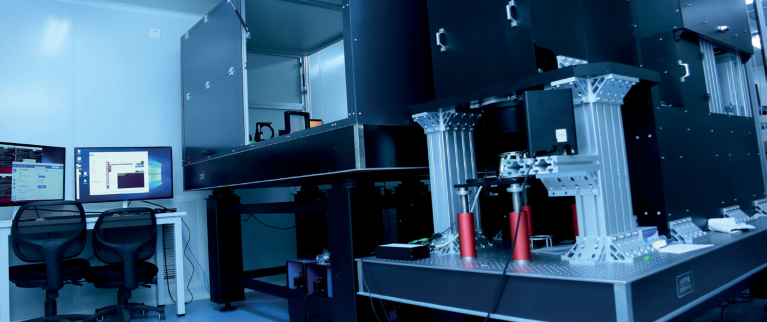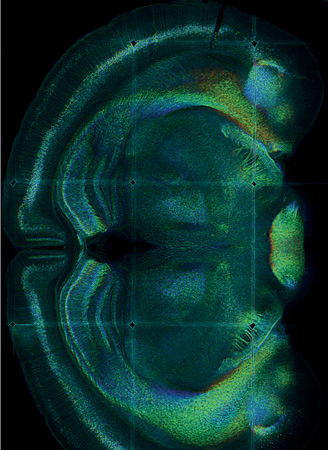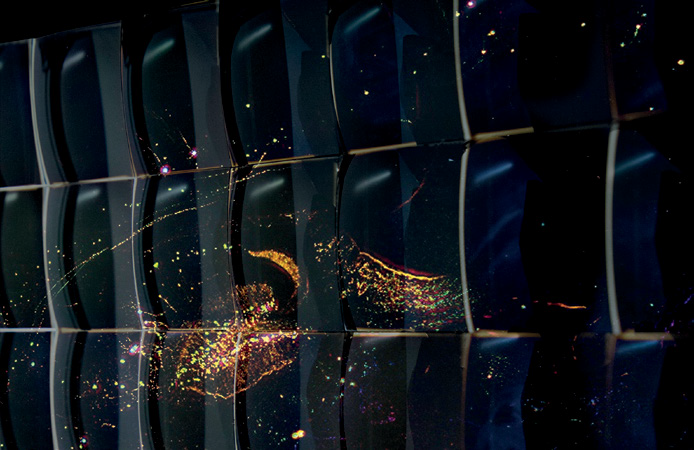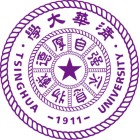
RUSH macroscope handles the enormous volume of data generated by imaging of biological dynamics with high spatiotemporal resolution.Credit: Tsinghua University
A fuller understanding of brain functions demands better imaging tools. A microscope developed by a team at Tsinghua University in Beijing, China, has allowed high-resolution imaging of near-surface brain cortical neural network structure and activity of animals in a wakeful state. This powerful tool has aided many studies at the Institute for Brain and Cognitive Sciences, Tsinghua University (THUIBCS).
Pushing the boundaries of imaging

RUSH is equipped to perform gigapixel imaging for brain-wide structural imaging and functional imaging of mice brains.Credit: Tsinghua University
In conventional microscopes, there is an inherent tradeoff between the field of view and resolution, explains Qionghai Dai, director of THUIBCS, and a member of the Chinese Academy of Engineering. The real-time, ultra large-scale, high-resolution (RUSH) imaging system developed by Dai’s team over four years of research, has overcome this limitation. Its architecture combines the best of optics, microelectronics and computation to allow gigapixel imaging at video rate, with a wide field of view of 1 cm2 and a high resolution of 0.4 micron (2nd generation RUSH).
The key to overcoming the limitation is a ‘flat-curved-flat’ imaging strategy, combining curved-surface imaging and field-division detection. Working with collaborators from other key universities and research institutions, the Tsinghua team constructed a big curved image sensor, whose lens has a spherical focal surface.

Inspired by the compound eye of insects, the concave image surface of RUSH’s microscopic objective is fitted with a densely-packed camera array of ultra-high resolution.Credit: Tsinghua University
“Inspired by the compound eye of insects, the concave intermediate image surface is divided and re-imaged to multiple flat-field images,” wrote Dai and his colleagues in a Nature Photonics paper, helping achieve full field-of-view coverage.
By integrating optics and computation, the team realized concurrent storage, reconstruction, and display of large-scale giga-pixel image files in real time.
The instrument allows multi-scale, high-speed imaging with improved spatiotemporal resolution. It has been used to image a variety of biological specimens from subcellular structures to tissues, as well as cellular dynamics. In particular, its capability in brain-wide structural and functional imaging in mice in a wakeful state has opened exciting new experimental opportunities.
Besides imaging the entire surface of a mouse brain in a single shot, RUSH is also used to track individual subcellular organelles and blood cells in motion, monitor neural activities in human and mouse brain slices, and investigate tumour metastasis in mice. This 80 million RMB project, sponsored by National Natural Science Foundation of China, will provide significant insights to neuroscientists and oncologists studying virus genetics, neuron-regeneration, and tumour invasion and metastasis.
Interdisciplinary brain science research portfolios
A cross-disciplinary endeavour with great application potential, RUSH is illustrative of THUIBCS’s broad aim to bridge basic and applied research, particularly on brain mechanisms, cognitive science, cognitive computing, brain engineering, and brain diseases. These five interlinked areas form a multilevel, systematic framework for research at THUIBCS. Starting with the fundamentals of the brain and the relationship with complex cognitive behaviours, new findings can clear long-term bottlenecks of neurodegenerative diseases and brain-inspired computing architecture.
On brain engineering, THUIBCS sets out to explore multimodal, multidimensional brain observation, and neural modulation technologies to support research on brain mechanisms. Easing current research constraints between micro-structural investigations of neural cells, facilitated by CT and fluorescence microscopy, and macroscopic studies of brain functions enabled by MRI, it attempts to apply novel imaging technologies, such as the RUSH system, to enhance mesoscopic study of whole-brain circuits. THUIBCS is also integrating different modalities, including single- and multi-photon, acousto-optic and photoacoustic imaging. The aim is to map out the brain at multiple levels, from molecules, cells, circuits and tissues to brain structure and signal pathways, along with their functions.
With recent breakthroughs of microlevel information processing and coding of neurons, and macrolevel functions of brain regions, mesoscopic level understanding of neural networks is greatly needed. It is crucial to construct a dynamic connectome mapping out brain connections, associating structures with their functions. Specifically, THUIBCS’s research in this area encompasses: the molecular mechanisms of neural development, differentiation and regulation, which may find applications in developing treatments of neurobiological diseases; the information processing in visual, auditory, somatosensory systems, and the neural mechanisms of sensory-motor transformation, memory and learning, which may guide the development of new AI chips; and the neural mechanisms of higher-level brain functions, such as cognition, emotion, and consciousness in primates.
Revealing the associations between brain structure and functions, and particularly, neural mechanisms of cognition formation and development is another focus area at THUIBCS. The aim is to develop theories on cognitive computing to support the development of AI. Current investigations include: biological principles of cognition, based on studies of neurons, brain circuits, and systems, to establish cognitive experimental methodology; and the feedback mechanism of cognitive processes to language, emotion, and thought to disclose the association between the change in brain structure and the development of cognition.
Improved understanding of cognition holds the key to overcoming limitations of the current computing framework, which is based on the von Neumann architecture and digital integrated circuits. Conventional computing cannot simulate higher-level abstract thinking processes such as intuition, association, and creativity. Inspired by the way neural circuits work, new algorithms, computing models and systems can be built, which, complemented by new optoelectronic technologies, can lead to new-generation AI computing paradigms. THUIBCS also expects to develop optoelectronic brain-inspired chips, nano-photonic devices and photoelectric communication systems, which are set to revolutionize diverse industries, including aerospace, unmanned systems, high-speed communications and smart medicine.
Another application of THUIBCS research is for prevention, treatment and rehabilitation of diseases such as Alzheimer’s and Parkinson’s. Focusing on their underlying mechanisms, scientists at THUIBCS work on the genetics of neurological and psychiatric diseases to establish indicators for early diagnosis and inform the development of targeted therapies. By identifying the main brain regions with cognitive degenerations, they seek to develop interactive cognitive training systems. They also attempt to devise brain-machine interface, neuromodulation techniques and non-invasive treatments to provide effective tools for intervention.
THUIBCS has forged collaborations with leading research institutions, and is looking to expand its international team to drive greater innovations.


